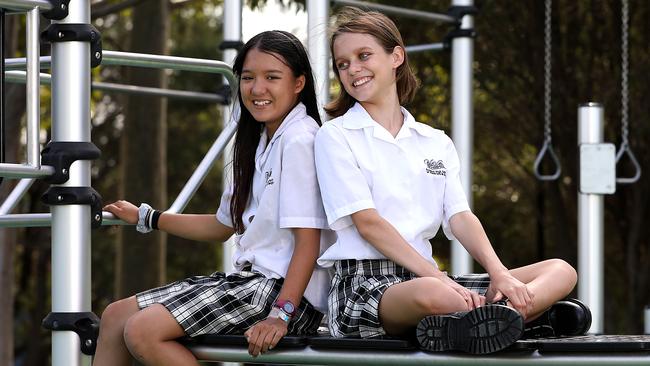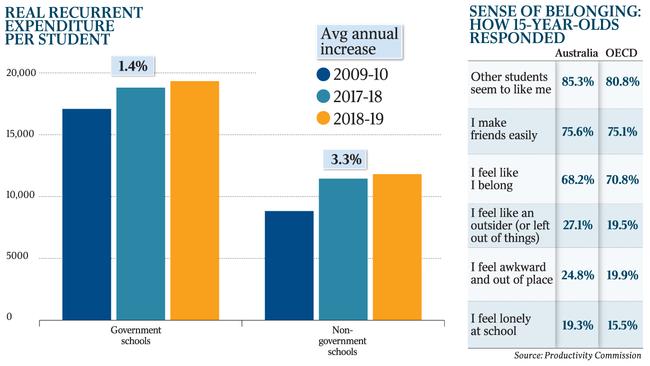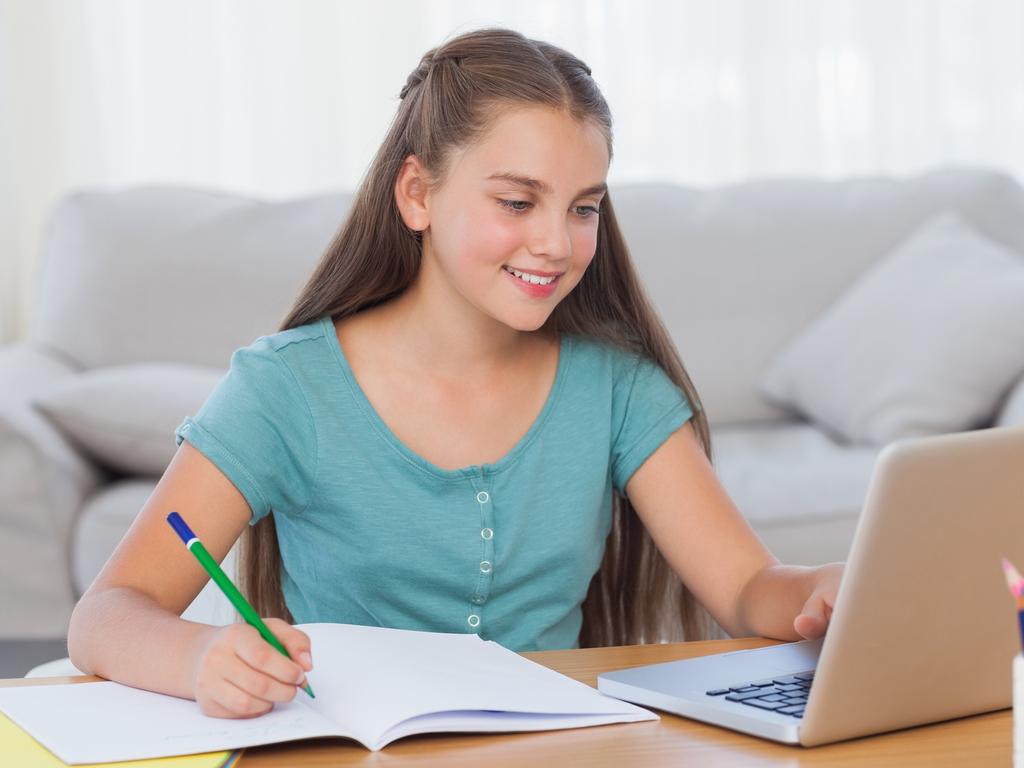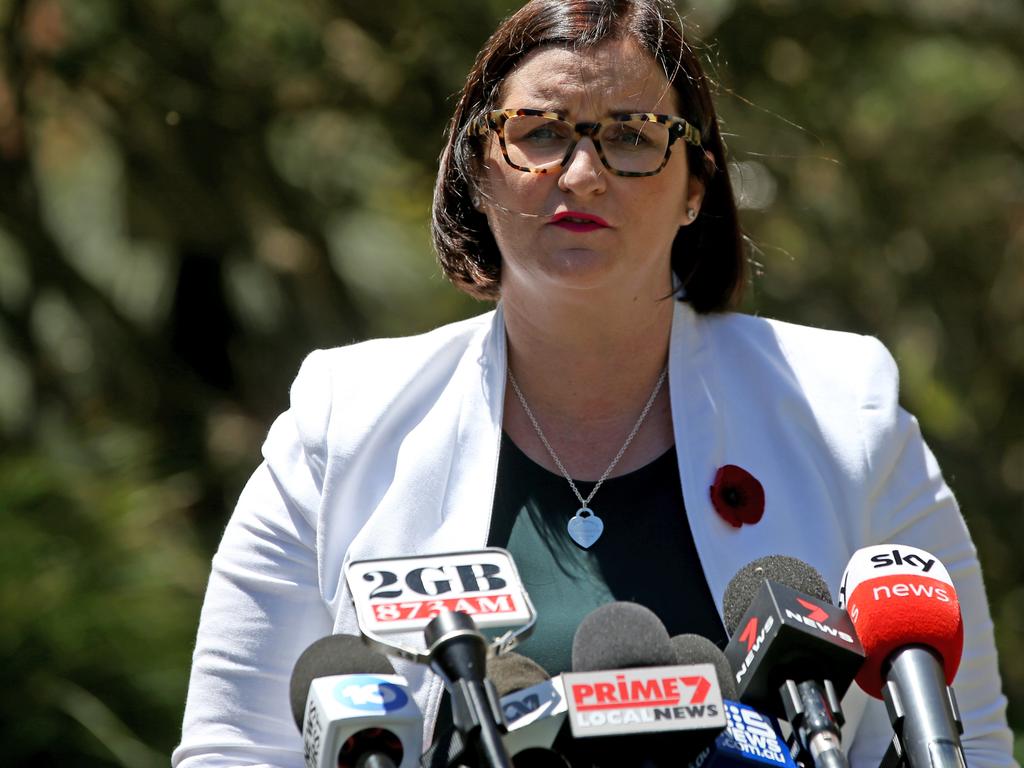Lessons from schools snapshot
Government spending on private schools has increased 3.3 per cent on average over the past decade compared to just 1.4 per cent for public schools, a new report finds.

Government spending on private schools has increased 3.3 per cent on average over the past decade compared to just 1.4 per cent for public schools, a new report on government services finds.
While the average annual public spend on each student in Australia is $16,748, the amount varies widely depending on location, the Productivity Commission report says, with students in the Northern Territory the costliest to the taxpayer at $25,280 a year and those in Victoria the cheapest at $15,438.
But in the remote areas of the NT it remains a struggle to get kids to go to school, with Year 1-10 attendance rates sitting at 58 per cent, compared to 92 per cent for children in the major cities.
In government schools across the nation, an average of $19,328 per student came from the public purse in 2018-19, the most recent available figures. This was up from $17,078 per student (in 2018-19 dollars) in 2009-10, an average annual increase of 1.4 per cent.
But in private schools, government spending has risen from $8822 per student in state and federal spending in 2009-10 (again in 2018-19 dollars) to $11,813 per student, a 3.3 per cent annual rise.
School attendance is a critical element in social equity, the Productivity Commission notes, and students in remote areas, particularly in the Northern Territory and especially Indigenous students, fall behind in attendance rates.
Students in remote parts of Australia attended school just 70 per cent of the time, dropping to 61 per cent for remote Aboriginal and Torres Strait Islander students.
Overall, Australian students feel relatively engaged and included at school, though slightly below the average for developed countries, the commission found. And academic results have been mixed over the past decade.
Sixty-eight per cent of 15-year-old students in Australia said they felt they belonged at school, compared to 70.8 per cent across OECD countries, a 2018 survey based on the Program for International Student Assessment cited by the commission found. And more than 85 per cent agreed that “other students seem to like me”.

However, one in five said they felt lonely at school, and 28 per cent said they felt like an outsider. For NSW students, that figure rises to 31.7 per cent.
Sydney high school students Mika Shapley, 13, and Amelie Lehmann, 12, say fitting in isn’t an issue, but the pair can understand how some might struggle.
For Amelie, schoolyard concerns revolved around whether others would like her. “I wasn’t too nervous about making friends,” she said. “I was more nervous about whether other people would like me.”
Mika said that as different as students may be, there will always be similarities. “You don’t want to be lonely at school so you kind of just look for new friends. You find that you’re going to have the same interest as at least a few people.”
Amelie said part of the process of making friends was getting comfortable with yourself. “You have to accept that people are different. At a school, your reputation isn’t everything, you just have to learn to be who you really are.”
In terms of academic performance, the commission’s report notes students have had mixed NAPLAN results since 2008 in the key disciplines of reading, writing and numeracy.
For reading, there was a statistically significant increase in the proportion of Year 3 and 5 students who achieved above the minimum standards in 2019 compared to 2008, but no improvement for years 7 and 9.
There has been no improvement in writing for any year since 2011. And numeracy is mixed, with improvements since 2008 in Years 5 and 9, but not years 3 and 7.





To join the conversation, please log in. Don't have an account? Register
Join the conversation, you are commenting as Logout